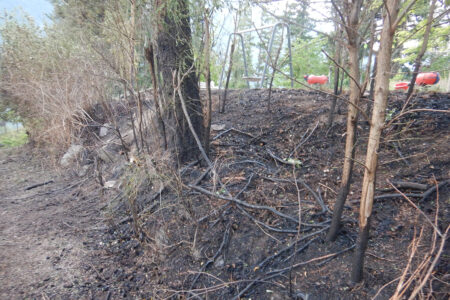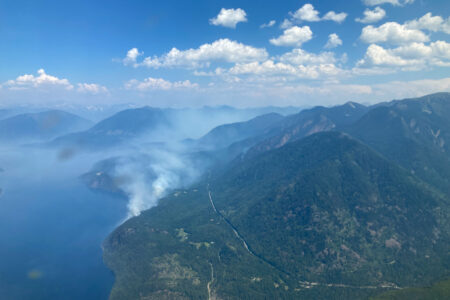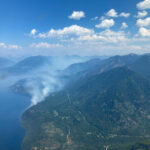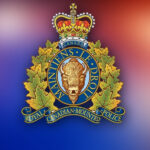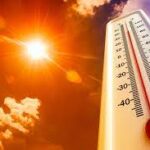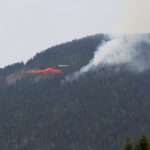Boundary Flood Recovery Update
Are you prepared?
2018 Floods
In 2018, communities in the Boundary region of BC were severely impacted by catastrophic flooding in the Kettle and Granby Rivers. Extreme runoff from rapid snowmelt and rain caused major damage to public and private property, businesses, agriculture, industry, and infrastructure. Thousands of people were affected and will continue to be affected for years to come. Boundary communities are working on flood recovery projects with Boundary Flood Recovery (BFR).
Flood Forecasting
Floods are often explained according to their likelihood of occurring in any given year. The most commonly used definitions in planning are 1 in 100-year or 1 in 200-year. It is important to understand that this does not mean a flood will occur once in 100 or 200-years. Unfortunately, such flood levels can occur annually depending on weather and climate. If we explain the potential for flooding as a probability or chance, then a 1 in 100-year flood has a 1% chance of being equaled or exceeded in any given year. A 1 in 200-year flood has a 0.5% chance of occurring.
What can you do now?
There are many unanswered questions about future flood mitigation; however, being informed and having a plan will help you take responsibility for your own property and take measures to protect yourself, your family and your home.
Know if you live in a flood-risk area:
- Understand the surrounding drainage and the lay of the land around your home and property, and ensure sump pumps, drain tiles, and drains in your yard flow to a recognized low point.
- Know if your home has flooded in the past and how. Flooding from ground water in certain areas of the Boundary can also present a serious issue and requires a different approach to protection than overland flooding.
Make emergency plans:
- Develop a household emergency plan and take steps now to safeguard your family and your home
- Have a plan for livestock and pets should you need to evacuate
- Create a personal emergency kit with important papers, medications and supplies
- Work with the natural environment rather than against it, by putting resilient measures in place around your home
Protect your property against floods:
This can range from changing your surrounding drainage to simple protection measures in case a flood happens.
- Store valuables on upper floors of your home
- Maintain roof gutters, and keep clear of snow and debris
- Re-direct eavestroughs at least 1.5 metres away from building foundations
- Maintain a sump pump
- Have a plan for moving and storing vehicles, RVs and other recreational vehicles
- Install a non-return sewer valve and/or plug all basement sewer connections; plug toilet, sink and shower drains if a flood is imminent
- Tile floors in areas which may be susceptible to water inflow
- Raise electrical outlets
- Move appliances above anticipated flood levels
- Secure and anchor propane tanks
- Stabilize and secure your oil tank, and;
- Know how to turn off your utilities.
Drainage or diking work on your property:
If you plan to undertake any drainage works or activities near a watercourse you need to obtain the necessary permission from FrontCounterBC, this may include a section 11 permit (information link below). Professional advice may also be required, as sometimes altering water flow can lead to other consequences on or around your property or a neighbour’s property.
What are we doing now?
The health and safety of first responders and the public are key priorities when we respond to any incident. With this in mind, we’re working together with community and other stakeholders to learn from previous years to better prepare as a community. This includes tapping into local knowledge and working with subject matter experts to develop a coordinated Flood Response Plan.
The Flood Response Plan will:
- Ensure everyone has an opportunity to be prepared and has the same information
- Take pre-emptive actions including identifying temporary flood protection locations in advance, and reviewing the locations for sand and sandbags
- Clearly define roles, responsibilities and procedures around Evacuation Alerts and Orders
- Provide more information for the public about what to do in the event of an Evacuation Alert or Order
- Establish advance guidelines for initiating Emergency Operations Centres, setting trigger points such as snowpack levels, and using river data to monitor flows in creeks and rivers.
Trigger points may include:
- Environment Canada weather warnings
- BC River Forecast Centre and United States Geological Service flood warnings
- Ministry of Environment snow pack data
- Local knowledge of creeks and rivers
- Reports of flooding and high water from the public
Other steps:
- As we approach the 2019 freshet, we will make stocks of sand and sandbags available to the public if flood conditions are imminent.
- We are now reviewing previously identified sand locations and procedures.
- We are now planning a series of flood preparedness information briefings and will advertise those to the public.




